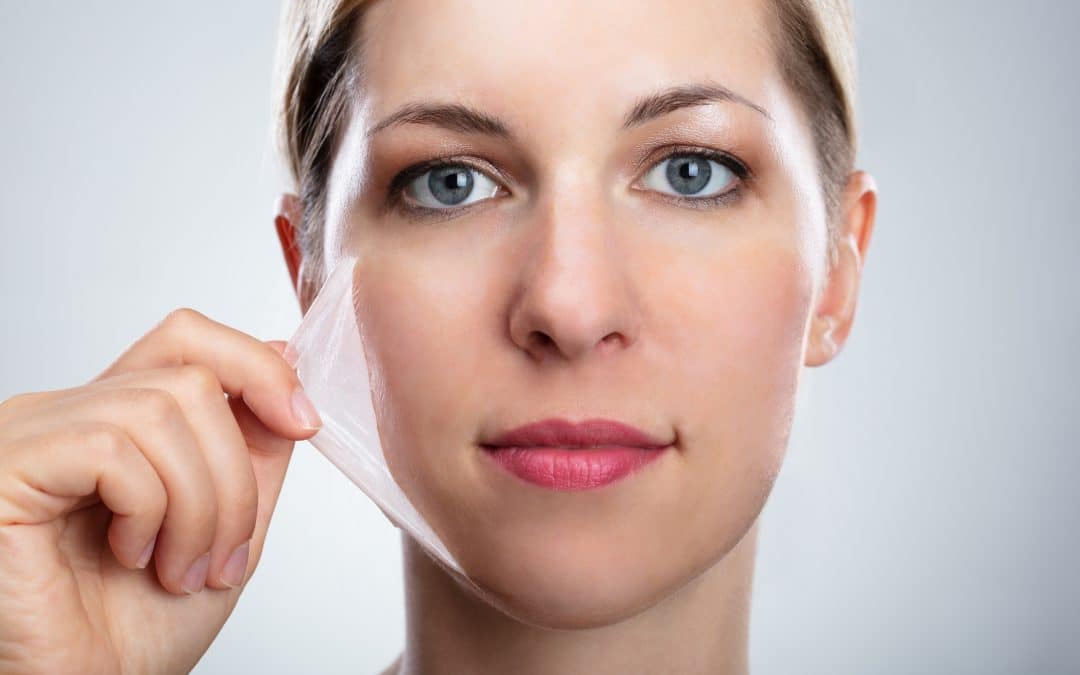What are Chemical Peels?
A chemical peel is a technique used to remove dead skin cells and improve the smooth texture of the skin. Chemical peels are typically applied to facial skin to stimulate the growth of new cells and to improve the appearance of the skin. This procedure can reduce wrinkles, acne, scars, uneven skin colouring and other skin imperfections. Different chemicals determine the depth of the peel and are specifically chosen depending on the type of skin condition that needs to be treated.
How is it done?
A chemical peel is a procedure where a chemical solution is applied to the skin in order to remove the top layer. Chemical peels can be performed at different depths from light to deep depending on the desired results. The procedure is typically non-invasive and carried out at a licensed practice or outpatient facility. Before the procedure, the doctor will clean the face, protect the hair, and cover the eyes using tape, goggles, or lotion. The exact steps taken during the treatment are dependent on the level of chemical peel selected.
Types
There are three types of chemical peel to choose from. Light to medium chemical peels is used to treat fine lines, dryness, and acne. Deep chemical peels are better suited for treating deep wrinkles, scars, and sun damage.
1. Light Chemical Peels
Light chemical peels do not usually require any pain relief and are designed to remove the top layer of skin also known as the epidermis. During a light chemical peel procedure, the doctor will apply a chemical solution, usually containing glycolic acid or salicylic acid, to the skin. The solution will be left for a few minutes as the treated skin begins to whiten. After, the doctor will apply a neutralising wash to remove the chemical. Regular treatment may be required to get desired results and maintain effects.
2. Medium Chemical Peel
Medium chemical peels remove the top and middle layer of skin from treated areas. During this treatment, you may be offered a sedative or painkiller to relieve any pain. A chemical solution containing trichloroacetic acid, sometimes in combination with glycolic acid is applied to the skin and left for a few minutes as the skin begins to whiten. Then, the doctor will apply a cold compress to soothe the treated areas as you may experience a burning or stinging sensation. It is advised that treatment is required every six to 12 months to maintain the effects.
3. Deep Chemical Peel
Deep chemical peels affect the deeper layers of skin and require a local anaesthetic or a sedative to numb any pain. Your heart rate and blood pressure will also be closely monitored. The doctor will apply a carbolic acid solution, otherwise known as phenol, to the skin which will begin to turn the treated area white or grey in colour. To monitor the exposure to phenol, this treatment is carried out in 15-minute intervals with the entire procedure taking up to 90 minutes. This treatment has long-lasting effects and does not need to be repeated.
What does a Chemical Peel do?
Chemical peeling can remove the outer layer of skin to treat fine lines, uneven skin tones, and dryness and can also remove deeper skin cells to remove wrinkles, scars, and precancerous growths. The depth of the chemical peel and the chemical solution used is determined by the skin condition that is to be addressed during the procedure. In all instances, the aim is to remove dead skin skins, stimulate new cell growth and improve the appearance of the treated skin.
What are Chemical Peels Good for?
Chemical peels improve the skin texture and tone as well as the appearance of fine lines and wrinkles. People often choose chemical peels to reduce skin imperfections through chemical solution treatment. Chemical peels are a cosmetic procedure that is commonly used to reduce the appearance of wrinkles and acne but can also be used to skin damage removal and precancerous growths.
How to Prepare for the Treatment
Before the procedure, you can expect your chosen doctor to review your medical history. You should be prepared to answer any questions regarding current and past medical conditions and medications in addition to any cosmetic procedures you have had. The doctor will also examine the area of the skin that is to be treated. This will determine which depth of chemical peel would provide the best results.
It is also important that before the treatment you discuss the steps of the treatment and any expectations or risks with the doctor. Make sure you have a clear understanding of how the treatment works and the recovery time. Your doctor may also advise you to use a retinoid cream to help with the healing process, take antiviral medication to prevent infection, and arrange for a lift home after the procedure in case you have been sedated.
What to Expect After the Treatment?
After any professional chemical peel treatment, you can expect your skin to be red, tight, and feel irritated, or swollen. After a light chemical peel, the treated skin may feel dry and itchy, but these effects reduce with each repeat treatment. It can take up to seven days for the skin to heal peeling and new skin may appear lighter or darker for a temporary duration.
After a medium chemical peel, your skin will be red and swollen with a stinging sensation. It can take up to six weeks for the skin to return to its usual state. In the meantime, ice packs and pain relief medication can help to reduce discomfort.
After a deep chemical peel, you can expect the treated skin to be red and swollen with a burning and throbbing sensation. A surgical dressing is usually applied to the treated skin, and you may be prescribed pain medication. Be sure to follow the doctor’s recovery advice.
How Much does Chemical Peel Cost?
In the UK, light to medium chemical peels cost around £60 to £100 depending on the experience of the practitioner. Deeper chemical peels can cost up to £500 due to their invasive nature and high effectiveness.
Where to Get it Done?
Chemical peels should be carried out by an experienced and qualified practitioner. Your chosen practitioner should be registered and be able to prove they have had the required training. It is best to choose a doctor who has ample experience and knowledge of the skin. This could mean being a dermatologist or dermatologic surgeon. If not professionally executed, chemical peels can result in complications and infection. Usually, chemical peels are performed in an outpatient surgical facility.
Boutique Dental 23 recruits exceptional nurses and therapists to carry out a variety of patient treatments so you know you are receiving the highest level of service.
For more information about chemical peels, contact an experienced member of the team today.


